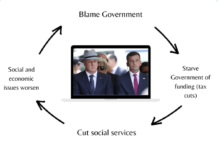Hon Jan Tinetti
Minister for Child Poverty Reduction
- Food insecurity for children aged 0 – 14ys down to 13% from 20% in 2019/20
- Children living in poor quality housing down to 6% from 8% in 2018/19
- Avoidable hospitalisations for children (0 – 14ys) stable despite pandemic, tough economic conditions
- 34% of all children (0-17ys) live in households spending more than 30% disposable income on housing
Government action during the most challenging economic conditions in a generation or more has resulted in a significant drop in food insecurity rates, Minister for Child Poverty Reduction Jan Tinetti said.
The annual Child Poverty Related Indicators report, released today, is an opportunity to look at the wider impacts of poverty on children and families in New Zealand. The latest data shows 13 percent of all children (0 – 14 years) live in households where food runs out sometimes or often, compared with 20 percent in 2019/ 2020.
“I’m heartened we are seeing meaningful decreases in critical statistics, but I know there is a lot of work ahead to really shift the dial. No child should be living in poverty,” Jan Tinetti said.
The Child Poverty Related Indicators report is an opportunity to look at the wider impacts of poverty on children and families in New Zealand. This year, the report shows some longer-term improvement trends.
“We’re seeing fewer children living in poor quality housing, and despite the tough economic conditions, those living in households spending more than 30 percent of disposable income on housing has remained stable.
The report compares trends over time based on ethnicity and socio-economic status, as well as other demographics.
“It’s good to see that some of the longstanding disparities affecting tamariki Māori and Pacific children are showing signs of improvement.
“Tamariki Māori and Pacific children still face greater barriers to living in quality housing, but rates for Pacific children have significantly improved. Likewise, tamariki Māori and particularly Pacific children face much greater barriers to food security, although rates appear to be trending down, with rates for tamariki Māori statistically significantly lower than the last two years.
The progress highlighted in this year’s findings build on the latest child poverty data, for the year ended June 2022. Eight out of the nine child poverty measures have seen a statistically significant reduction since 2017/18, while all three primary measures of child poverty are now lower than they have been over the past 10 to 15 years for which comparable data is available.
“This Government remains completely committed to tackling the persistent disparities that remain for many groups. We won’t stop until Aotearoa, New Zealand is the best place in the world for all children and young people,” Jan Tinetti said.
Key actions the Government has taken to help reduce child poverty since Labour took office
- $5.5 billion Families Package increased financial support for low-income families, including increases to the Family Tax credit, Accommodation Supplement changes, and the introduction of the Best Start Payment and Winter Energy Payment
- Indexation of main benefits to average wage growth for the first time in New Zealand’s history
- Successive increases to main benefit rates
- The largest increase in abatement levels in over two decades, increasing the amount beneficiaries can earn before their benefit reduces
- Lifts to the minimum wage, from $15.75 in 2017 to $22.70 an hour from 1 April 2023
- $2.8 billion COVID income support package, which permanently increased benefits by $25 per week, doubled the Winter Energy Payment for 2020, and broadened eligibility for the In-Work Tax Credit
- The COVID Income Relief Payment (June 2020 to February 2021) and the residential rental freeze (March to September 2020)
- Introduced a suite of improvements to WFF, that will increase the incomes of 346,000 families by an average of $20 a week from April 2022
- Introduced indexation of Childcare Assistance income thresholds, so they increase every year in line with wage increases, as well as a further increase to the thresholds that will come into effect from 1 April this year
- Introduced measures to stop predatory lending that often impact low-income families
- Expanded school-based health services and making doctors’ visits free for children under 14
- Reduced education costs, by removal of NCEA fees, and increased funding so parents of Decile 1-7 schools don’t have to pay school donations
- Improved the quality of housing and conditions for renters by implementing the Healthy Homes Guarantee Act 2017 and through changes to the Residential Tenancies Act 1986
- Ka Ora, Ka Ako has helped reduce food insecurity for children and young people since 2020, by providing daily school lunches to approximately 220,000 students at 987 schools
- Rolled out free period products for all students across New Zealand.
- Delivered more public housing, with over 18,000 places due by 2024 through the public housing build programme





how EXACTLY do you lift children out of poverty without lifting their parents out of poverty? and I don’t mean socialism for the middle class but those really at the bottom….